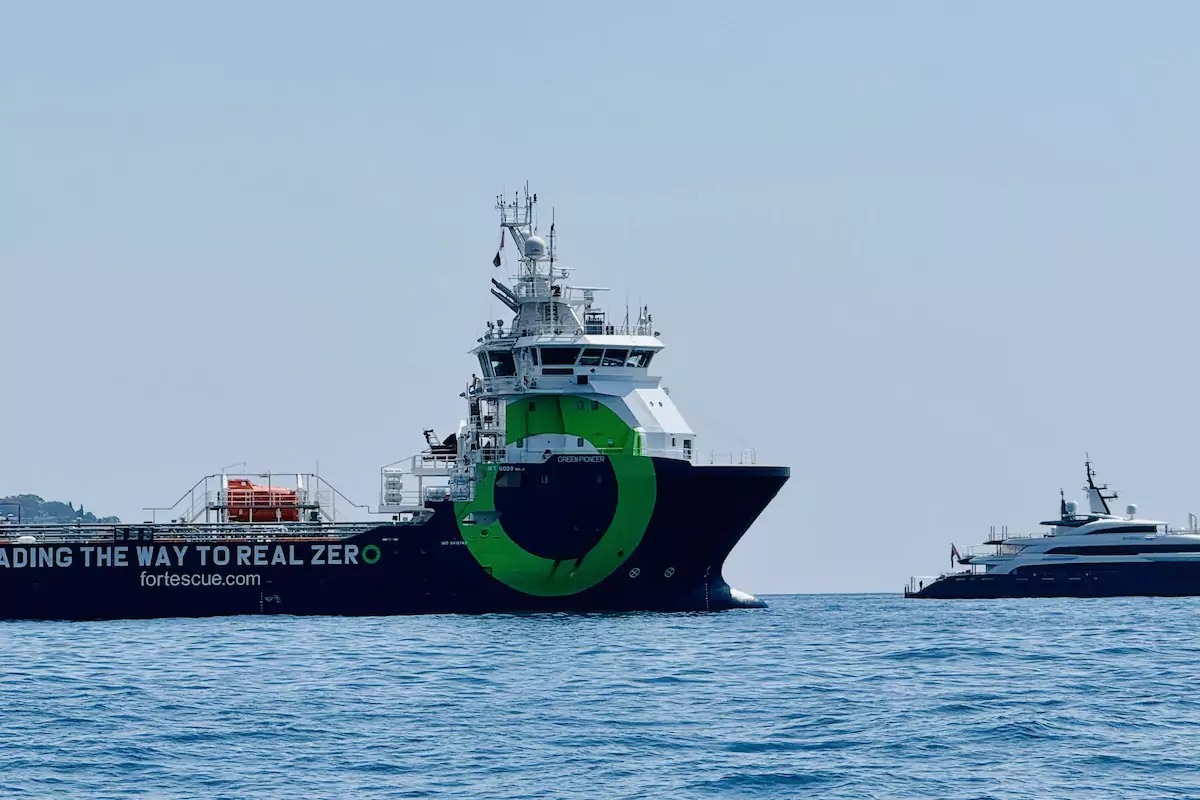A mining giant’s green vessel docks in Monaco to lead the
World's First Ammonia-Fueled Ship Docks in Monaco

This past weekend, Monaco welcomed the Green Pioneer, the world’s first ammonia-fueled ship, which docked off its coast as a striking symbol of climate innovation. Adorned with a fluorescent green zero and the slogan “Leading the way to real zero,” the vessel represents a significant step forward in sustainable shipping. Its arrival coincided with the Blue Economy and Finance Forum, emphasizing the potential for major industries to lead in climate action.
Revolutionizing Maritime Fuel
The maritime industry contributes nearly 3% of global greenhouse gas emissions, primarily due to the reliance on heavy fuel oil, a highly polluting fossil fuel. While alternatives like liquefied natural gas (LNG) and biofuels have emerged, they fall short of providing a long-term solution. LNG still emits carbon dioxide and poses methane leakage risks, while biofuels face scalability challenges and competition with food crops.
Ammonia, however, offers a promising alternative. It contains no carbon atoms, meaning that when combusted correctly, it produces no carbon dioxide. Additionally, ammonia is already widely traded for use in fertilizers, providing a robust infrastructure for its adoption as a marine fuel. Andrew Hoare, Fortescue’s Head of Green Shipping, stated, “Ammonia doesn’t have a carbon molecule, which is perfect. We have set out to show that ammonia can be used as a very effective marine fuel.”
Fortescue’s Ammonia-Powered Vessel Wraps Up Sea Trials in Singapore
The Green Pioneer is equipped with four engines, two of which have been converted to run on ammonia. This dual-fuel system allows the ship to operate safely while testing ammonia propulsion in real-world conditions. Following successful land-based tests in Perth, the ship completed sea trials and docked in Dubai for COP28, showcasing the future of low-emissions shipping.
Breaking New Ground in Regulations
When Fortescue initiated the project, ammonia lacked a formal regulatory framework for marine fuel. Rather than wait for regulations, the company took proactive steps. “There was no rulebook,” Hoare explained. “So we approached Singapore and said, ‘We’ll be burning ammonia in this ship in your port within six months.’” Singapore responded by deploying 100 officials to oversee the pioneering effort.
Fortescue completed the necessary conversions and sourced green ammonia locally. The ship successfully navigated Singaporean waters, leading to a significant regulatory milestone: in December 2024, the International Maritime Organisation (IMO) approved ammonia as a marine fuel, ahead of schedule. However, full-scale commercial use remains limited, with ammonia fuel currently permitted only in specific regulated port areas. International protocols for open sea use are still under development, necessitating further advocacy and demonstration projects.
Since its conversion, the Green Pioneer has traveled from Singapore to Dubai, the UK, Belgium, the Netherlands, and now Monaco, generating considerable interest along the way. At COP28, it attracted attention from dignitaries and global leaders, with regulators and industry figures touring the ship to witness the technology firsthand. Despite the enthusiasm, Hoare acknowledges economic challenges, as green ammonia is significantly more expensive than traditional fuels. However, he believes that the introduction of carbon pricing frameworks for shipping could make fossil fuels less attractive over time.
Fortescue is committed to advancing ammonia-fueled shipping, with plans for a new ammonia-fueled bulk carrier set to deliver in 2026 or early 2027. This vessel will transport iron ore from Australia to China, serving as a critical test of green ammonia at scale. The company aims to establish green ammonia infrastructure along key shipping routes, focusing on strategic investments rather than a global overhaul.
At forums like the one in Monaco, Fortescue emphasizes that corporations need not wait for ideal conditions—they can create them. By investing early and collaborating with regulators, industry leaders can accelerate progress beyond the pace of government policy. As Hoare aptly stated, “The technology exists. The policies are coming. We’ve proven it’s possible. Now it’s time to scale, to walk the talk, and to keep accelerating the pace of change—on the ocean and under it.”
